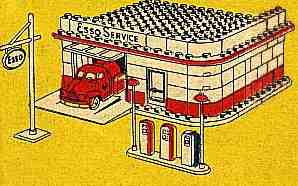|
|
|
Contents |
| Introduction
Arguments For The Proposition That Mental States Called 'Beliefs' Must Have Structure Natural Language Is 'Productive' |
Key reference: J.A. Fodor: 'Why there still has to be a Language of Thought'
We have thought about the representational theory of thought, and a naturalistic alternative. The representational theory of thought says that thinking is the handling of symbols, symbols some of which stand for propositions. The naturalsitic alternative says there are representations in the brain, symbols, but very very often they aren't representations of propositions.
Before taking the naturalistic approach further, I now want to dwell a little bit more on the Representational Theory. I want to explain why some people believe not only that propositions must be represented in the brain when we think, but that those propositions must be represented in a language. Not English or Japanese, which are languages of spoken and written expression, but a language of thought. The theory that there must be a language of thought is a slight elaboration on the representational theory.
Here is the Representational theory: If I have the following thought: I don't want to meet the press, so I had better nip in the back way what is happening the RTT says that there is a state of a bit of my brain representing my wish to avoid publicity and another (partial) brain state representing my belief that the best way of doing this is to go in the back door: and other bit of brain circuitry linking the two and initiating action.
The Language of Thought hypothesis says that the representation of the belief here must be structured : it must be structured just as a sentence expressing that belief must be structured.
The langauge of thought hypothesis goes one step beyond the minimal version of the Representational Theory of Thought. It says that the structure of the representation in the brain and the linguistic representation of the same thing must be similar - the structure of the brain state corresponding to the belief will parallel the structure of the sentence expressing the belief.
Thus:
'... the logical form of the proposition believed will be copied in the structural form of the states in correspondence with them.' LT, in Lycan, p.164.
In terms of an example:
Take the belief passing through my mind that the cat is on the mat.

You might express the belief in words like this:
'The cat is on the mat.'
On the language of thought hypothesis, inside the brain there will be a physical state corresponding to this belief, and that state will be analysable into substates: a substate for 'cat', another for 'mat' - and so on for the other words.
Fodor develops arguments for this thesis in his paper 'Why there still has to be a Language of Thought'.
Fodor's contribution is to provide arguments for the thesis that the mental states we call 'beliefs' have to be regarded as structured in the way that sentences are structured.
I present them in a different order to the one Fodor uses - because I think they are easier to grasp this way.
First let's think of two features of natural languages which Fodor thinks any system of handling representations in the brain surely must share: natural languages are 'productive', and they are 'systematic'.
How many sentences would you understand should they be presented with them? An infinite number.
(Consider:
'There is a snake in this room.'
 'There
are 2 snakes in this room'
'There
are 2 snakes in this room'
And so on.)
Language is productive: you don't learn sentences as such, you somehow learn rules which enable you to generate an indefinite number of sentences.
The likeliest hypothesis: this is because language is structured. That eg sentences are made up of components which are semi-autonomous, ie can be used over and over in different sentences. Sentences are not blobs.
Is this a helpful analogy?
At the cheaper end of the market you can buy
a plastic garage
a plastic airport
 |
| You can buy model garages molded in plastic... |
a plastic town
a plastic harbour
a plastic farm
Or you can buy sets of lego which enable you to build each of these things one after the other.
Language is systematic: 'the ability to produce/understand some of the sentences is intrinsically connected to the ability to produce/understand many of the others.' (Fodor, quoted by Jimmy, Lecture 2, page 19.)
You don't expect a native speaker to know how to say in English that John loves mary without knowing how to say that Mary loves John.
 |
| ... or buy a set of lego bricks and make a garage - and then a farm, and then a house, and then a harbour, and so on - out of those. |
The likeliest explanation (again) :
language is structured. That eg sentences are made up of components which are semi-autonomous, ie can be used over and over in different sentences. Sentences are not blobs.
If language is like this, so must thoughts be. Because anything we can express in language we can think.
What you need to explain systematicity of thought is LOT.
The idea here is that there is structure in some of the things that we do, and that it would be surprising if there was no corresponding structure in the causation. If the causation is a matter of mental events, like intentions, we might expect those causes to be structured correspondingly.
Fodor defends a general methodological principle of the form: one type of explanation is preferable to another because it is simpler.
What is the principle?
Suppose you have two events, a bang and a stink, each of which sometimes occurs.
Suppose you know that what causes the bang is carbon monoxide exploding
and that what causes the stink is the release of hydrogen sulphide.
Now suppose the two events, the bang and the stink occur together.
You don't know what caused the double event.
But, says Fodor, the reasonable inference, other things being equal,
is that carbon monoxide exploding and hydrogen sulphide getting released were together the cause.
Putting this schematically:
carbon monoxide ignition > bang
hydrogen sulphide release > stink
cause X > bang + stink
Then, other things being equal, it is reasonable to infer that X is a complex event whose constituent elements include carbon monoxide ignition and hydrogen sulphide release.
Or in principle:
Assume:
c1 is a kind of event of which the normal effect is a kind of event e1
c2 is a kind of event of which the normal effect is a kind of event e2
c3 is a kind of event of which the normal effect is a complex event e1 & e2
c1 > e1
c2 > e2
c3 > e1 & e2
Then, other things being equal, it is reasonable to infer that c3 is a complex event whose constituents include c1 and c2.
Applying this to mental events and the actions they may be supposed to cause:
Let c1 be intending to raise your left hand
Let e1 be raising your left hand
Let c2 be intending to hop on your right foot
Let e2 be hopping on your right foot
Let c3 be intending to raise your left hand and hop on your right foot
Let e3 be raising your left hand and hopping on your right foot
Then the choices for explaining the causation here are these:
1. the cause of e3 is a complex of which e1 and e2 are likely to be constituents
2. the cause of e1has nothing to do with the cause of e3.
Fodor thinks (1) must be preferred on methodological grounds. It cuts down dramatically on the number of explanations required, or, to put it another way, on the number of coincidences or accidents that have to be acknowledged.
Let me put this again:
It is simpler to have one integrated account of two happenings than to have two accounts which have nothing to do with each other.
For example, take the complex action of liftng the left foot and raising the right arm.
Take the explanation that this is produced by a single intention, to lift the left foot and raise the right arm.
The consider raising the left foot on its own. This could be put down to having the intention of raising the left foot.
Unless mental states (in this case intentions) were structured, these two accounts would not be related. They would be two independent accounts. But if they are structured, the second could be shown as part of the first.
For other arguments offered by Fodor see the article
A currently popular view is that " for each predictively attributable belief, there will be a functionally salient internal state of the machinery, decomposable into functional parts in just about the same way the sentence expressing the belief is decomposable into parts - that is, words or terms. The inferences we attribute to rational creatures will be mirrored by physical, causal processes in the hardware; the logical form of the propositions believed will be copied in the structural form of the states in correspondance with them. This is the language of thought coded in our brains, and our brains will eventually be understood as symbol manipulating systems in at least rough analogy with compters.
I do not believe that this is obvious."
Dennett, in "True Believers", in Lycan, 2nd edition, p. 85.
A cat on a mat: thanks to All Weather Cat Mats
Snakes: thanks to Oregon State University
One piece garage: thanks to Dolls Houses
Garage built of lego: thanks to Eric's Lego® Creations
Revised 05:02:03